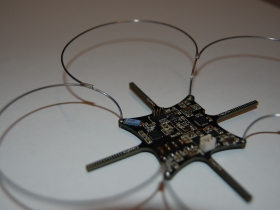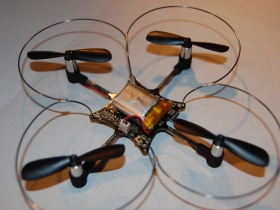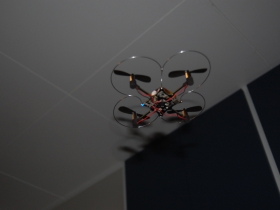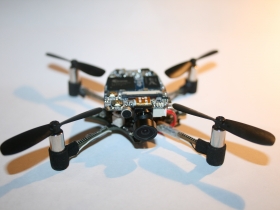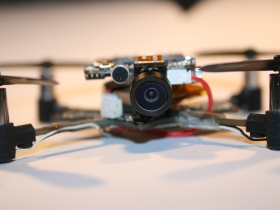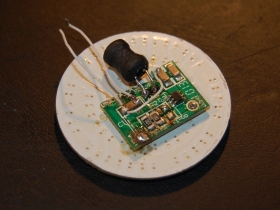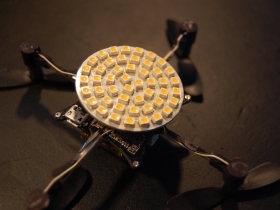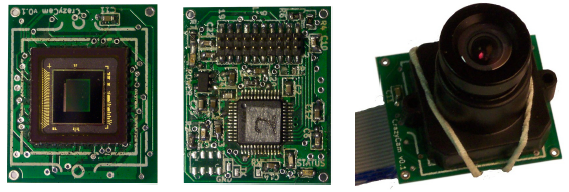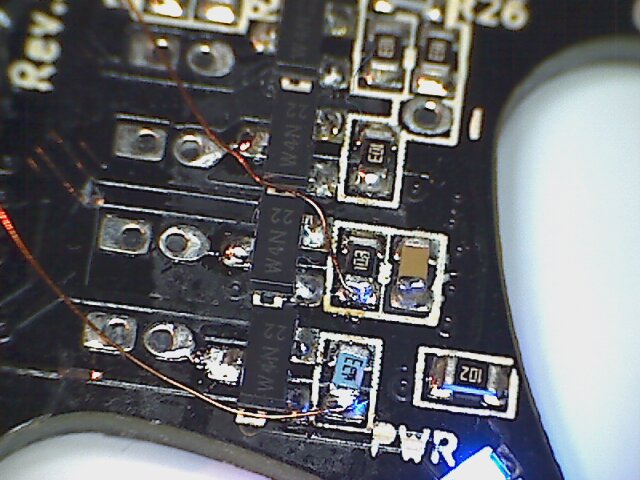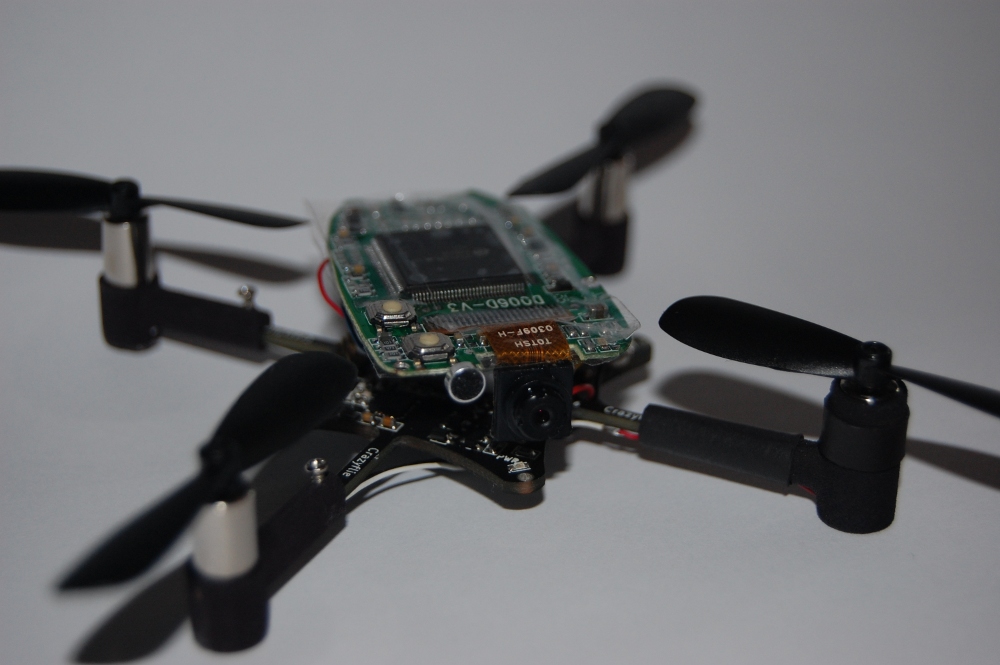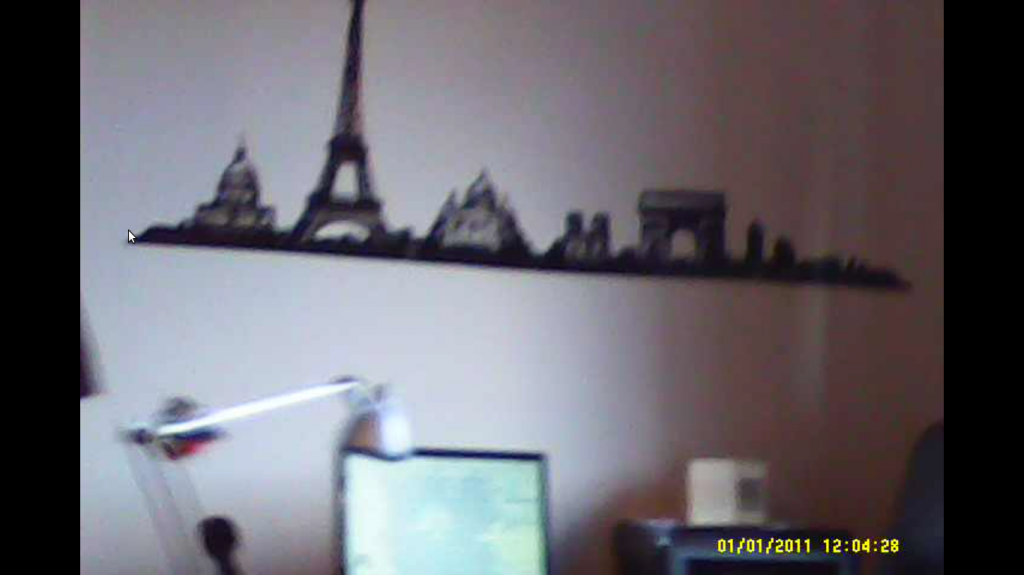While we are waiting for the pre-series to arrive, which hopefully will be within 4-5 weeks, we have tested this idea we have had for a while. On the Crazyflie PCB we placed mounting holes in each corner for the possibility to add e.g. a landing gear, canopy or maybe a protective frame. The holes are about 0.9mm and plated so it is possible to solder something in it and a protective frame made of piano wire would be a good candidate.
We bought a couple of 0.8 mm thick 1m long piano wires at a nearby hobby store and got to work. On the first try we bend the wires into the shape solely by hand and it didn’t look or work well at all. We figured there must be some better way! And after searching the net we found this site explaining how to make your own DIY springs of different types. We however needed a circle with a much bigger diameter than normal springs use so it took us a while to find a tube with the right diameter to bend it around to get the right size. We found out that when bending the piano wire around a tube with the diameter of 20mm it ended up at about 55mm which was close enough to the 60mm we needed. Piano wire is a bit hard to solder but with plenty of solder flux it works well. We are pretty pleased with the result!
The piano wire frame itself weights about 3.5-4g so it is within the acceptable payload limit. The flight characteristics is changed a bit making it more controllable but less agile which is perfect for beginners. We have tested throwing it in the ground and crashing it several times and the Crazyflie just bounces so it works great. It might even be possible to go to a smaller piano wire diameter to save weight because now the frame is very stiff. Next step would be to come up with a design that could be attached/detached without soldering. It should also be cheap and easy to manufacture.
